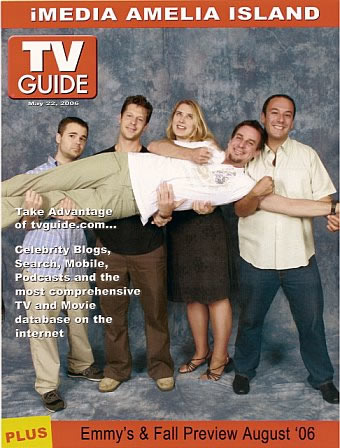
This interview is with Chris Young, who founded Klipmart, which he sold to DoubleClick. He recently started the Digital Broadcasting Group. His businesses have focused on online video, advertising, sponsorship, and promotion. Chris has worked on some really interesting things in the online world by incorporating video ads into web ads. His video advertising runs on sites like: MaximOnline.com, MTV, Heavy.com, IGN.com, GameSpy, Yahoo Games and MSN Entertainment.
Full Interview Audio and Transcript
Personal Info
Hobbies and Interests: Music by the Rolling Stones, REM, Tom Petty, Live Music, Baseball, Watching Tennis.
Favourite Sports Teams: New York Yankees.
Favourite Books:
- Leadership by Rudolph Giuliani
- Books by Jack Welch
- Business Biographies
Company Website: http://www.dbgroup.tv
Fast Track Interview
Adrian Bye: Today, I’m here with Chris Young, who founded Klipmart and now Digital Broadcasting Group. His businesses have focused on online video, advertising, sponsorship, and promotion. Chris, tell us about yourself and the companies you founded.
Chris Young: In 1999, I founded a company called Klipmart, which specialized in putting ad banners on the Internet. Specifically, it encouraged advertisers to run their video of TV spots within those ad banners. This took off in 2002-2003. The business grew from six people to 65 people and $20,000 in revenue to $15 million in revenue. In June 2006, we sold the company to DoubleClick. I stayed at DoubleClick as the Executive Vice-President of their rich media business. In January 2008, I left DoubleClick.
Recently, I started a new business called Digital Broadcasting Group or DBG. We’re focused on creating, producing, and syndicating original broadband webisodic content. In other words, we’re working with all kinds of different people in creating shows for the Internet, whether they’re scripted comedies, documentaries, etc. Then, we secure agencies and advertisers to sponsor the show.
This is really creating a broadband show of 10 shows in a series of three to five minutes in length. We have an empowered consumer that can switch your brand on or off at a bat of an eyelash. Creating a webisode is a way to really emerge your brand and engage your consumer in their lifestyle rather than talking down to a very smart, empowered consumer in an ad banner.
Adrian Bye: Why the focus on video?
Chris Young: When I founded Klipmart, the company’s mission statement was to take the best of TV broadcast commercial and marry it with the interactive and reporting capabilities of the Internet. That mission statement never changed over the seven years of the company. In essence, the thought process was that TV is a tried and true medium. It’s just a matter of time before it migrates its way onto the Internet through flesh and blood video. That’s exactly what happened. It started potentially because it was broadband constrained to 30-second commercials and 60-second commercials. Now, it’s moving from the TV commercial realm into long-form video content because the broadband pipes can support it.
Adrian Bye: Is putting video in banners something that increases click-through rates and, therefore, makes advertising more effective?
 Chris Young: With video, we’re able to measure a lot of things that you can’t necessarily measure when you’re running an ad on television or a simple banner ad.
Chris Young: With video, we’re able to measure a lot of things that you can’t necessarily measure when you’re running an ad on television or a simple banner ad.
Namely, we look at the percent of video viewed. The clip index in 2006 indicated that, on average, a consumer would watch 20.5 seconds of a 30-second spot. That’s a really dynamic new metric that advertisers could only guesstimate through Nielsen Ratings. It was a huge moment to be able to go a step further toward accountability and say how many people you’ve reached and the percent of the video watched. There’s so much more accountability with the Internet.
Click-through rate was always higher with the video ad. As an industry, we really struck ourselves in the foot in the mid-90s saying, “Look here. Look here. Pick me. Pick me. Look at what we can do. We can track the amount of people that click on an ad.” It was a double-edged sword. At the end of the day, the industry got dragged down by this fairly ineffective metric that had nothing to do with branding. It was really a contrived direct response mechanism, and we were really held to that. It wasn’t until 2004 that we finally shrugged off the click-through rate, and people effectively didn”t look at that with such a singular focus as they had before.
Adrian Bye: What does an ad look like?
Chris Young: We’ve done some really neat executions. We shot Tiger Woods on a green screen for Electronics Arts. We did live banner streaming into an ad banner for New Line Entertainment’s movie The Number 23.
Generally as you”re reading an article, there’s an ad within the page that’s 300 x 250 in size, for example. When the user’s reading the article, the page loads, and the TV commercial starts playing within that ad unit. There are millions of different variations on the theme with different shapes and sizes, and some expand if you roll your mouse over them.
Adrian Bye: If someone like Sony says, “We have a new movie coming out”, you’ll talk to them and help them promote the movie. You’ll make the creative. Do you help them with the media buying as well?
Chris Young: The great thing about this business is the ad agency does the media buy. What Klipmart did, and what DoubleClick now does, is takes the creative assets from the creative agency. It takes the media plan from the media agency and takes the video assets from the advertiser and puts them all together. Then it distributes it to the Web sites from the media plan.
Adrian Bye: You’re effectively a consulting agency helping create the creatives?
 Chris Young: We’re delivered the shell of the ads. Then we get the video. We get a media plan telling us where it should be executed, and we put the whole thing together. We handle all the metrics tracking and all the rich reporting that happens on the back end, such as the percent of video viewed. We tag everything, so we can do reporting against it. If there’s live streaming or a green screen, we handle that. We’re really experts in video.
Chris Young: We’re delivered the shell of the ads. Then we get the video. We get a media plan telling us where it should be executed, and we put the whole thing together. We handle all the metrics tracking and all the rich reporting that happens on the back end, such as the percent of video viewed. We tag everything, so we can do reporting against it. If there’s live streaming or a green screen, we handle that. We’re really experts in video.
Adrian Bye: Are you involved in discussions where they’re setting the CPM rate? Chris Young: We’re not really involved in the CPM rate. That’s between the agency and the website in terms of what they’re going to pay. For a banner video ad, the rates are probably on average about $15. We charge an additional $2 CPM as the vendor to deliver that video ad, or we’ll embed our rate with the websites, such as the global deals we have in place with Yahoo, AOL, and MSN where our fee is baked into the cost of the media.
Adrian Bye: What have been key metrics that they are tracking?
Chris Young: We’re able to track all kinds of things. We’re able to track the percent of video viewed. We can look at the different things within an ad. For example, say it has a game or video in it, or you can download a wallpaper. We’re able to track who did what, who played the game, for how long they played, who downloaded the wallpaper, and which wallpaper they downloaded. We’re able to track functionality, such as sharing the ad with a friend or putting the ad on a social network page through the ad unit’s widget share function.
Adrian Bye: Basically you can buy media, and then it will get virally passed around. You might have a CPM buy at about $12 to $15, but then you go and get free inventory because people share all these ads. Do you have any numbers on how that actually works?
Chris Young: I was with a client a couple of weeks ago at Sundance, and I said, “How did that go?” Without revealing too much, it was very effective. I was amazed and shocked that the amount of impressions he ran to the amount of people that actually shared it was so high.
It goes right back to what I was saying at the beginning, which is in the notion with the the Empowered Consumer. You need to now elevate the conversation with your consumer on their terms, which is immersing your brand into their experience hence the share functionality, the share widget functionality, or empowering them to participate.
For example, we’re producing a new show called Celebrity Game Wars. In that show, it’s going to revolve around this new game called Rock Band. We’re going to have a celebrity show up, and we’re going to interview them. They can fill their band with their entourage. Then they face off. The points tell only half the story. The Internet audience can then vote for whom they thought rocked out the hardest and, in essence, will select the celebrity winner.
Adrian Bye: The concept you’re working with now is again taking video. You want to have short clips of video that users can easily put on different Web sites around the net, but instead of working with advertisers this time, you’re actually producing content?
Chris Young: Yes and no. If you think about the value chain, we create or co-create broadband shows, we secure digital ad sponsors to sponsor those shows, who foot the bill for production. Then, we produce those shows and need to create reach and frequency for those shows. Unlike TV, you don’t have a built in audience somewhere. You have to sit down with the media agency and say, “Where do we want this show to live?”
In essence, we are creating shows that only live online. I met with Oscar winning actor about six weeks ago. He has a new show where he came up with the concept, produced it, and stars in it. He wants to take it to the Internet. In that case, we may work with him to secure the ad sponsor, and we’re syndicating. We’re providing the reach and frequency.
Adrian Bye: How does the sponsoring work? Does an ad run before, after, or during the show?
 Chris Young: A lot of product integration is built into the show. For example, we have another show called Shopping with the Stars where a famous person goes up and down Rodeo Drive and goes into his or her favorite shops. At the shops, there’s some no name person with a thousand dollars to spend. They get outfitted and get fashion tips from this star. In that case, there are opportunities to do tasteful product integration.
Chris Young: A lot of product integration is built into the show. For example, we have another show called Shopping with the Stars where a famous person goes up and down Rodeo Drive and goes into his or her favorite shops. At the shops, there’s some no name person with a thousand dollars to spend. They get outfitted and get fashion tips from this star. In that case, there are opportunities to do tasteful product integration.
We want smart integration because, remember, we have a very smart, empowered consumer. The cars they drive to get to the stores, the credit cards they use, and the stores they go to give us different ways to do that. The advertiser or the sponsor is getting product integration and maybe a 15-second pre-roll before the show starts. For example, a15-second ad for the sponsor’s brand or a 5-second introduction saying “Brought to you by Chevy.”
Adrian Bye: Since these are webisodes, we’re going to see more than just one. How do I know there are others? How do I get those, subscribe to them, or find out when there are more?
Chris Young: Basically the show would live and breathe on an anchor Web site we pick, such as Yahoo, MSN, or MySpace. Then there’d be a whole community with news about the upcoming show. In order to really create reach, you need to go beyond the destination site.
We would sit down with the sponsor’s media agency and ask about the consumer, such as where they live to determine where the show should live. Then we will begin to build a syndication plan just like a media plan of the show. The show is not only going to live on a destination site. It’s also going to live in places around the Internet. For example, Celebrity Game Wars can go on MaximOnline.com, MTV, Heavy.com, IGN.com, GameSpy, Yahoo Games, or MSN Entertainment.
Adrian Bye: You can pay to have the video run on those sites with your ads. They don’t try to put their own ad on it?
Chris Young: No, they don’t because it’s a paid buy.
Adrian Bye: It doesn’t show up on their site as a featured video?
Chris Young: It would just be another piece of content within their player. We have a whole syndication group at DBG that does this in conjunction with the ad agency. Depending on the deal they struck with the Web site, they might run a whole bunch of banner ads promoting the show.
Adrian Bye: Someone is going to be paying actors, writers, and all of those people. Is all of that covered by the advertisers?
Chris Young: Correct. It’s exactly the same way on TV. Corporate sponsors pay for all those talent salaries on television. They do it indirectly through their TV spot purchases, but it’s the exact same thing.
Adrian Bye: This way they actually have more control over it, don’t they?
Chris Young: A hundred percent and much better reporting metrics. It’s much more targeted to their consumer. It’s the wave of the future. The television will be replaced by the computer as the video distribution vehicle in the next 5 to 10 years without a doubt.
Adrian Bye: Since it is a series, if I watched the second one but I missed the first one, how do I find out about the remaining episode and catch up? Is there a link at the end saying, “Come and see other episodes here”? How are you actually building a relationship and getting their content at the consumer ongoing?
Chris Young: The consumer knows that every Tuesday at 11:00 a.m. for example, the new installment of Celebrity Game Wars comes out or Shopping with the Stars. It comes out on the anchor site and, simultaneously, on all the syndicated sites on a regularly scheduled phase. People will see it by the sheer fact that they’re consuming video on all these top Web sites.
Adrian Bye: Is there anything else we haven’t talked about yet?
Chris Young: What is so exciting about the Internet is it’s like the industrial revolution. We have the opportunity that the previous couple of generations didn’t have to really innovate with this really fun, brand new medium. It’s really exciting to redefine modern media. I’m really excited about broadband video, where it’s going, and how it’s going to completely transform our media consumption habits.









